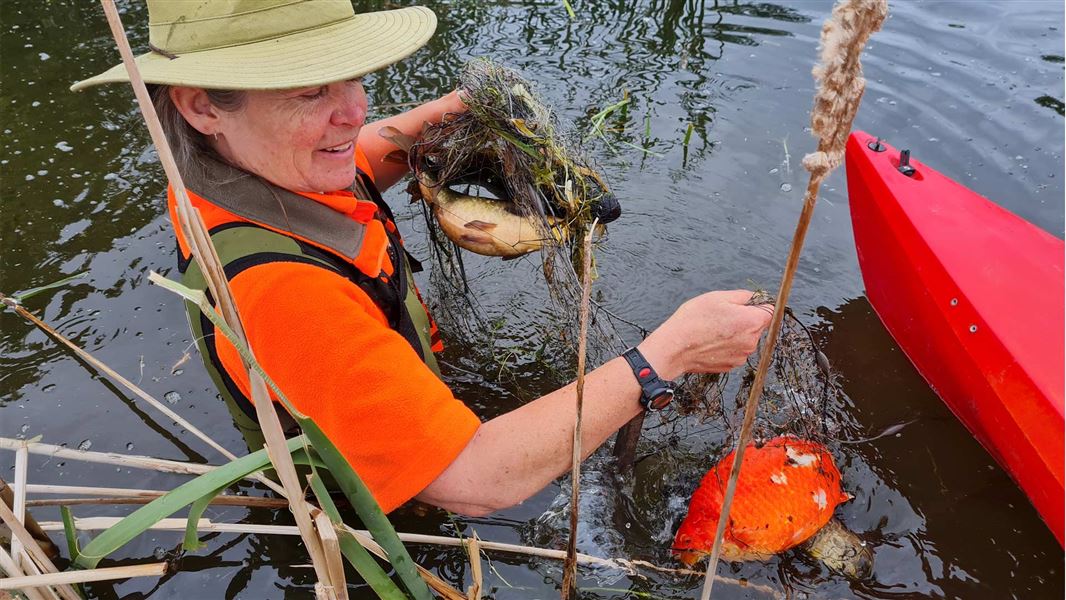Stopping the spread of invasive species
Ngā Riha Wai Māori began in 2019 to help contain and control invasive freshwater species.
The workstream is linked directly to the objectives of Te Mana O Te Taiao the Aotearoa New Zealand Biodiversity Strategy 2020, especially to reduce the biological threats and pressures to native species through management.
The workstream has a particular focus on these species:
- koi carp (Cyprinus rubrofuscus)
- rudd (Scardinius erythrophthalmus)
- gambusia (Gambusia affinis)
- hornwort (Ceratophyllum demersum).
Other invasive freshwater species are also being tackled. This includes working to contain and eliminate golden dodder (Cuscuta campestris) in Waikato and raising awareness of other pest species such as lindavia (lake snow) in Nelson Lakes National Park and lagarosiphon on the South Island’s West Coast.
Principles and priorities
Our work follows four established principles for managing invasive species:
- prevent new populations establishing
- contain existing populations to prevent further spread
- eradicate invasive species where practical
- manage invasive species at high priority sites to minimise their effects.
To achieve these principles, we have established the work priorities listed below.
Prevention
Our top priority is to stop pest species becoming established in new areas. To do this we need to understand the pathways that allow invasive species to spread, raise awareness of the threats the species pose and develop and improve methods to minimise the risk of spreading.
Detection
Detecting the presence of pest species involves implementing methods to find out if a pest species is present in a waterbody, and how widespread it is. Detection may involve planned survey and monitoring work using established methods or be a fortuitous find that leads to a delimiting survey at the site.
We are always looking for ways to improve detection methods and use innovative approaches.
Research
Research is an essential part of this work. A better understanding of the pests, their ecological impacts and ways they could be controlled are important for making good decisions about management. This includes testing the reliability of environmental DNA (eDNA) methods and the use of remote detection devices such as drones.
Current research topics include:
- how to adapt biosecurity tools developed overseas for local conditions
- using eDNA and drones to assess areas affected by pests
- development of biocontrol methods and lures, and identifying pest life stages that could be targeted
- trialling new pest control methods such as blocking spawning sites, using vacuum dredges or applying UV light
- how climate change is expected to affect the risks posed by pest species.
Team and approach
The Ngā Riha Wai Māori team includes a North Island and a South Island coordinator and freshwater pest rangers based in different regions. The rangers have roles shared between this workstream and Ngā Ika e Heke and work closely with Arawai Kākāriki and Ngā Awa river rangers.
Ngā Riha Wai Māori is developing regional surveillance, containment and eradication plans in partnership with iwi, communities, landowners and other agencies.
Connections with other programmes
This workstream is closely aligned with the National Freshwater Biosecurity Partnership Programme, which runs the Check Clean Dry campaign. Led by MPI, it brings together DOC, Biosecurity New Zealand, Fish & Game, local government agencies, industry organisations and specific Māori entities to prevent the further spread of freshwater pests.
Contact
For more information email info@doc.govt.nz.
